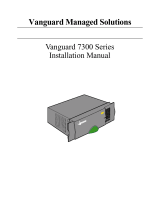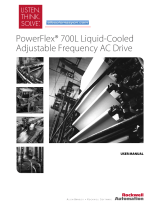Page is loading ...

Basic Characteristics Data
*1Please refer to Series/Parallel operation in the instruction manual.
*The switching frequency of single ended flyback method changes according to input voltage and load factor.
*The value of input current is at ACIN 100V and rated load.
input fuse
250V 5A
250V 5A
250V 3A
250V 3A
250V 2A
Rated
Basic Characteristics Data
PMC100E
PMC75E
PMC50E
PMC30E
PMC15E
Model
70 - 380Flyback converter
2.4
1.8
1.4
200
200
50 - 300
50 - 300
frequency
Switching
Circuit method
Flyback converter
Flyback converter
[A]
0.8
0.4
current
Input
operation availability
No
No
No
No
No
Series/Parallel
Parallel
operation
Thermistor
Triac
Triac
FR-4
CEM-1
CEM-1
Ye s
Ye s
Ye s *1
*1
*1
PCB/Pattern
Thermistor
Thermistor
Inrush
protection
current
CEM-1
CEM-3
Material
Double
sided
Ye s
Ye s
sided
Single
*1
*1
Series
operation
[kHz]
Forward converter
Forward converter
PMC-12
PMC

1 Terminal Block
2 Function
3
5
Series Operation and Parallel Operation
Peak Loading
PMC-13
4 Assembling and Installation Method
4.1
4.2
4.3
Instruction Manual
PMC-14
PMC-16
PMC-17
2.1
2.2
2.3
2.4
2.5
2.6
2.7
Input voltage range
Installation method
Inrush current limiting
Derating
Mounting screw
Overcurrent protection
Overvoltage protection
Output voltage adjustment range
Isolation
Minimum output current of +5V
PMC-14
PMC-15
PMC-15
PMC-15
PMC-15
PMC-15
PMC-15
PMC-16
PMC-16
PMC-16
PMC-17
PMC-14
PMC
AC-DC Power Supplies Enclosed type

1 Terminal Block
PMC-14
lPMC15E
lPMC30E
lPMC50E
Frame ground
AC(L)
NC
AC(N)
LED(+5V)
Output voltage adjustable potentiometer(+5V)
Frame ground
AC(N)
NC
AC(L)
LED(+5V)
Output voltage adjustable potentiometer(+5V)
AC(N)
NC
AC(L)
LED(+5V)
Output voltage adjustable potentiometer(+5V)
Input voltage selecting terminal
NC
G1(V1) GND
V1 Output
G2(V2, V3)GND
V3 Output
V2 Output
NC
G1(V1) GND
V1 Output
G2(V2, V3)GND
V3 Output
V2 Output
V1 Output
G1(V1) GND
G2(V2, V3)GND
Frame ground
V2 Output
V3 Output
2 Function
lPMC75E PMC100E
AC(L)
AC(N)
Input voltage selecting terminal
(Short: AC85 - 132V Open: AC170 - 264V)
LED(+5V)
Output voltage adjustable potentiometer(+5V)
V1 Output
V2, V3 GND
Frame ground
V1 GND
V2 Output
V3 Output
2.1 Input voltage range
n
n
n
n
n
n
n
n
n
n
n
The range is from AC85V to AC264V or DC110V to DC370V.
AC input voltage must have a range from AC85V to AC264V for
normal operation. If the wrong input is applied, the unit will not op-
erate properly and/or may be damaged.
In cases that conform with safety standard, input voltage range is
AC100-AC240V(50/60Hz).
The range is from AC85V to AC132V or AC170V to AC264V
(User selectable).
By changing the connection method of input switch terminal
(CN3), either AC100V or AC200V is possible to operate (refer to
the terminal drawing).
If the connection is misused, the power supply will be dam-
aged. The input voltage should be within the above range.
In cases that conform with safety standard, input voltage range is
AC100-AC120V, AC200-AC240V(50/60Hz).
The range is from AC85V to AC132V or AC170V to AC264V
(User selectable).
By changing the input voltage selector (short or open), either
AC100V or AC200V is possible.
If the connection for short/open is misused, the power supply
will be damaged. The input voltage should be within the above
range.
In cases that conform with safety standard, input voltage range is
AC100-AC120V, AC200-AC240V(50/60Hz).
Short between AC85V to AC132V
Open between AC170V toAC264V or DC220V to DC370V
l
l
l
PMC15E PMC30E
PMC50E
PMC75E PMC100E
PMC
A
Instruction Manual
AC-DC Power Supplies Enclosed type

PMC-15
2.2 Inrush current limiting
2.3 Overcurrent protection
n
n
n
n
n
n
n
Inrush current limiting is built-in.
If a switch on the input side is installed, it has to be the one han-
dling the input inrush current.
The thermistor is used for protection from inrush current. When
power is turned ON/OFF repeatedly within a short period of time,
it is necessary to have enough time for power supply to cool
down.
The thyristor technique is used for protection from inrush current.
When power is turned ON/OFF repeatedly within a short period of
time, it is necessary to have enough time between power ON and
OFF to operate resistance circuit for inrush current.
Overcurrent protection is built-in and comes into effect at over
105% of the rated current.
When the overcurrent/short circuit condition continues more than
20 seconds, it may damage devices inside the power supply.
The power supply which has a current foldback characteristics
may not start up when connected to nonlinear load such as lamp,
motor or constant current load. See the characteristics below.
Overcurrent protection prevents the unit from short circuit and
overcurrent condition of less than 20 sec.
The unit automatically recovers when the fault condition is
cleared.
l
l
PMC15E PMC30E PMC50E
PMC75E PMC100E
2.4 Overvoltage protection
2.5 Output voltage adjustment range
2.6 Isolation
2.7 Minimum output current of +5V
n
n
n
n
n
n
In V1, overvoltage protection circuit is built-in to be operated at
115 - 140% of the rated voltage. When this function operates, in-
put should be shut off, and then wait for 1.5 minutes( ). Output
voltage will be recovered after applying input voltage.
Adjustment of output voltage for V1 is possible by using potenti-
ometer.
Output voltage is increased by turning potentiometer clockwise
and is decreased by turning potentiometer counterclockwise.
When potentiometer is over-turned clockwise, overvoltage protec-
tion function activates. To set up output voltage, first turn potenti-
ometer counterclockwise to the end, then turn back clockwise
gradually until reaching the level of required voltage.
For a receiving inspection, such as Hi-Pot test, gradually in-
crease(decrease)the voltage for the start(shut down).
By V1(+5V) load condition, the load factor of V2 and V3 are
changed as below.
The recovery time depends on input voltage.
Please avoid applying the over-rated voltage to the output termi-
nal. Power supply may operate incorrectly or fail.In case of oper-
ating a motor etc. , please install an external diode on the output
terminal to protect the unit.
Avoid using Hi-Pot tester with the timer because it may generate
voltage a few times higher than the applied voltage, at ON/OFF of
a timer.
If the unit is tested on the isolation between input & output and
output & FG, output terminals must be shorted.
lPMC50E PMC75E PMC100E
Remarks:
lPMC15E
A
Output Voltage [V]
V
Load factor [%]
100
Fig. 2.1 Current foldback characteristics
Note: In case of nonlinear load, the output is locked out at A point.
: Load characteristics of power supply.
: Characteristics of load (lamp, motor, constant current load, etc.).
PMC
Instruction Manual
AC-DC Power Supplies Enclosed type

PMC-16
lPMC30E
lPMC50E
lPMC75E
lPMC100E
3 Series Operation and
Parallel Operation
n
n
n
n
Series operation with V2 and V3 is available by connecting the
outputs of the unit as shown below. Output current in series con-
nection should be lower than the lowest output current of the unit.
Series operation with other models is not possible.
By adding diode externally at output side, series operation with
V1 and V2 or V3 is available. For details, please consult our sales
or engineering departments.
Parallel operation is not possible.
4.1 Installation method
4.2 Derating
n
n
n
When two or more power supplies are used side by side, position
them with proper intervals to allow enough air ventilation. Ambient
temperature around each power supply should not exceed the
temperature range shown in derating curve.
The operative ambient temperature is different by with/without
case cover or mounting position. Please refer drawings as below.
When unit mounted except below drawings, it is required to con-
sider ventilated environment by forced air cooling or tempera-
ture/load derating. For details, please consult our sales or engi-
neering departments.
(1)Mounting method
lPMC15E
4 Assembling and
Installation Method
PMC
Instruction Manual
AC-DC Power Supplies Enclosed type

lPMC75E PMC100E
(1)Mounting method
(2)Derating curve
Note:
In the hatched area, the specification of Ripple, Ripple Noise is
different from other area.
Keep isolation distance between screw and internal components
as below chart.
4.3 Mounting screw
n
(2)Derating curve
(1)Mounting method
(2)Derating curve
(1)Mounting method
(2)Derating curve
l
l
PMC30E
PMC50E
5 Peak Loading
-10 0
55 50[]45 40[]35 30[]25 20[] 65 60[]55 50[]45 40[]35 30[] 70 65[]60 55[]50 45[]40 [35]
Inside [ ]
is with
case cover
30
Forced air (0.5m /min)
3
Convection
100
80
60
40
20
0
C mounting
B mounting
A mounting
Ambient temperature [ ]
2010
Load factor [%]
-10 0 65 50[]55 40[]45 30[]35 20[] 55 50[]45 40[]35 30[]25 20[]
70 65[]60 55[]50 45[]40 35[]
Inside [ ]
is with
case cover
30
Forced air (0.5m /min)
3
Convection
100
80
60
40
20
0
C mounting
B mounting
A mounting
Ambient temperature [ ]
2010
Load factor [%]
Model
PMC 15E
PMC 30E
PMC 50E
max
4
4
8
Model max
8
8
Unit:[mm]
PMC 75E
PMC 100E
lPMC50E
nPeak load current is possible to draw 30 seconds. It will damage
devices inside the power supply when the peak load current con-
tinues more than 30 seconds.
PMC-17
PMC
Instruction Manual
AC-DC Power Supplies Enclosed type
Powered by TCPDF (www.tcpdf.org)
/

